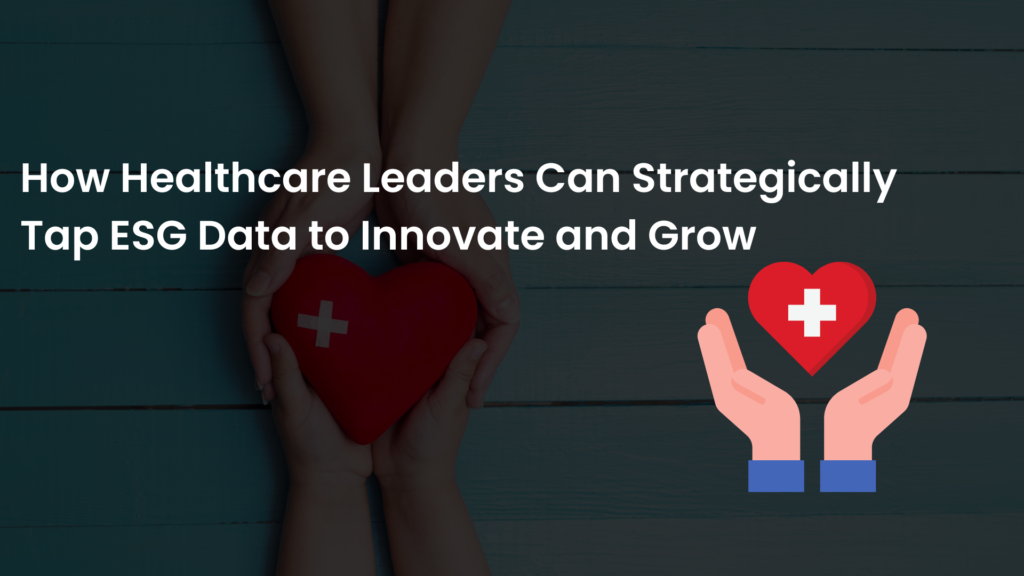CXO
UPDATES
How Healthcare Leaders Can Strategically Tap ESG Data to Innovate and Grow
ESG (Environmental, Social, and Governance) data is a collection of metrics used to measure the environmental impact, social responsibility, and governance practices of organizations. In the healthcare industry, ESG data includes policies and practices for securing patient health information and sustainability practices such as energy-efficient medical devices and eco-friendly packaging.

The accuracy, consistency, and reliability of ESG data are crucial for effective sustainability performance measurement and informed decision-making. CDOs (Chief Data Officers) in the healthcare industry must handle both PHI (Protected Health Information) and ESG data securely, implement strict security measures and ensure the data is accurate and consistent. Analytics and machine learning techniques are valuable in identifying trends and patterns in ESG data, while data governance policies and data management policies ensure the accuracy, consistency, and reliability of data. By integrating ESG factors into an organization’s strategic vision, executives can align sustainability initiatives with overall business objectives and foster a culture of long-term value creation for stakeholders. Access to capital, financial performance, industry leadership, and partnerships are additional opportunities that healthcare business leaders can leverage by embracing ESG data and sustainability efforts.
Healthcare leaders can strategically tap ESG (Environmental, Social, and Governance) data to innovate and grow in several ways:
- Reduce environmental impact: Healthcare organizations can analyze ESG data to identify areas where they can reduce their environmental impact. This may involve implementing sustainable practices, reducing waste and emissions, and investing in renewable energy sources.
- Enhance social impact: Healthcare organizations can use ESG data to identify opportunities to enhance their social impact. This may involve investing in community health initiatives, improving patient satisfaction, and promoting diversity and inclusion.
- Improve governance: Healthcare organizations can use ESG data to identify areas where they can improve their governance practices. This may involve enhancing transparency, accountability, and risk management.
- Attract investors: Investors are increasingly interested in ESG performance as a measure of a company’s long-term sustainability. Healthcare organizations that can demonstrate strong ESG performance may be more attractive to investors.
- Innovate new products and services: Analyzing ESG data can also provide healthcare leaders with insights into new product and service opportunities. For example, identifying unmet needs in underserved communities or developing products that reduce environmental impact.
In summary, healthcare leaders can strategically tap ESG data to innovate and grow by reducing environmental impact, enhancing social impact, improving governance, attracting investors, and identifying new product and service opportunities.